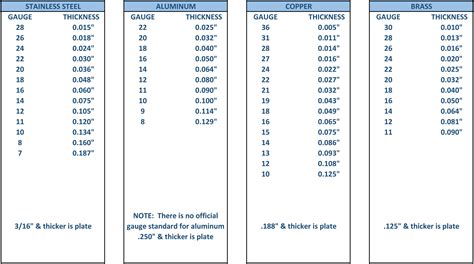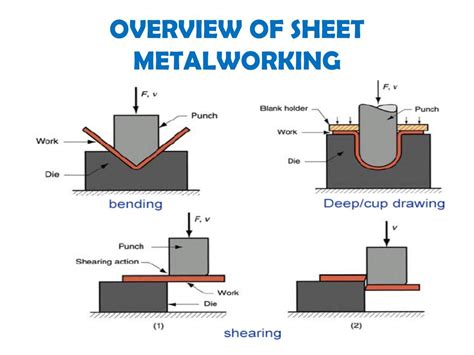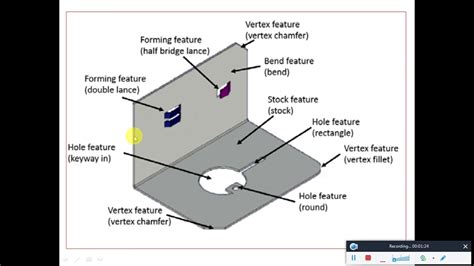definition of sheet metal Sheet metal is metal formed into thin, flat pieces, usually by an industrial process. Thicknesses can vary significantly; extremely thin sheets are considered foil or leaf, and pieces thicker than 6 mm (0.25 in) are considered plate, such as plate steel, a class of structural steel. Sheet metal is available in flat pieces or . See more Check out our 3 layers lunch box selection for the very best in unique or custom, handmade pieces from our lunch bags & boxes shops.
0 · which thickness called sheet metal
1 · what is sheet metalworking
2 · what is considered sheet metal
3 · sheet metal characteristics
4 · metal sheet thickness in mm
5 · how thick is sheet metal
6 · how sheet metal is made
7 · different types of sheet metal
Buy 【Only Compatible with Bullet Cameras】 Universal Bullet Security Camera Mount Bracket Hide Cable, Metal Electric Enclosure, Waterproof Outdoor Camera Cover, Base Junction Box .
Sheet metal is metal formed into thin, flat pieces, usually by an industrial process. Thicknesses can vary significantly; extremely thin sheets are considered foil or leaf, and pieces thicker than 6 mm (0.25 in) are considered plate, such as plate steel, a class of structural steel. Sheet metal is available in flat pieces or . See moreHand-hammered metal sheets have been used since ancient times for architectural purposes. Water-powered rolling mills replaced the manual process in the late 17th century. The . See moreBendingThe equation for estimating the maximum bending force is,$${\displaystyle F_{\text{max}}=k{\frac {TLt^{2}}{W}}}$$,where k is a factor taking into account several parameters . See more
Fasteners that are commonly used on sheet metal include: clecos, rivets, and sheet metal screws. See more
• "Manufacturers Standard Gauge History". Steel Market Update. Archived from the original on 2013-09-28. Retrieved 2013-06-19.• "Sheet Steel Gauges and Thicknesses" (PDF). Sheet Steel Facts. Sachiya Steel International. . See moreStainless steelGrade 304 is the most common of the three grades. It offers good corrosion resistance while . See moreThe use of sheet metal, through a comprehensive cold working process, including bending, shearing, punching, laser cutting, water jet cutting, riveting, splicing, etc. to make the final product we want (such as computer chassis, washing machine shells, . See more
• Circle grid analysis• Corrugated galvanised iron, also known as Corrugated Sheet Metal• Diamond plate• Forming limit diagram See more The meaning of SHEET METAL is metal in the form of a sheet.Sheet metal is metal formed into thin, flat pieces, usually by an industrial process. Thicknesses can vary significantly; extremely thin sheets are considered foil or leaf, and pieces thicker than .Sheet metal is metal formed by an industrial process into thin, flat pieces. Sheet metal is one of the fundamental forms used in metalworking, and it can be cut and bent into a variety of shapes. Countless everyday objects are fabricated from .
The article gives an overview of sheet metal. This includes standard measurements, materials and different forming methods.
which thickness called sheet metal

Sheet metal is metal that is formed into thin, flat pieces. Sheet metal is generally produced in sheets less than 6 mm. It is one of the fundamental forms used in metalworking and can be cut .Today’s most common sheet metal types in industry include stainless steel, aluminum, carbon steel, and copper. Understanding your project’s specific needs is the key to choosing the suitable sheet metal. Consider factors like strength, .
the metal head box master of puppets
In its simplest form, sheet metal is a thin, flat piece made from the more prominent metal roll. The metal sheet is uniformly thin, no more than 6mm thick. This makes it flexible and ideal for different manipulation techniques. Metal .We encounter sheet metal everywhere, whether in cars, household appliances, construction, the electrical industry, containers or housings. We have therefore compiled seven facts worth .Sheet metal is metal formed into thin, flat pieces, usually by an industrial process. Thicknesses can vary significantly; extremely thin sheets are considered foil or leaf , and pieces thicker than 6 mm (0.25 in) are considered plate, such as plate steel, a class of structural steel .
The meaning of SHEET METAL is metal in the form of a sheet.Sheet metal is metal formed into thin, flat pieces, usually by an industrial process. Thicknesses can vary significantly; extremely thin sheets are considered foil or leaf, and pieces thicker than 6 mm (0.25 in) are considered plate, such as plate steel, a class of structural steel. Sheet metal is metal that has been formed into thin, flat pieces, usually through an industrial process. It is generally produced in sheets less than 6 mm thick. Sheet metal is one of the fundamental forms used in metalworking, and it .
what is sheet metalworking
Sheet metal is metal formed by an industrial process into thin, flat pieces. Sheet metal is one of the fundamental forms used in metalworking, and it can be cut and bent into a variety of shapes. Countless everyday objects are fabricated from sheet metal. The article gives an overview of sheet metal. This includes standard measurements, materials and different forming methods.
Sheet metal is metal that is formed into thin, flat pieces. Sheet metal is generally produced in sheets less than 6 mm. It is one of the fundamental forms used in metalworking and can be cut and bent into a variety of different shapes.Today’s most common sheet metal types in industry include stainless steel, aluminum, carbon steel, and copper. Understanding your project’s specific needs is the key to choosing the suitable sheet metal. Consider factors like strength, durability, cost, .
In its simplest form, sheet metal is a thin, flat piece made from the more prominent metal roll. The metal sheet is uniformly thin, no more than 6mm thick. This makes it flexible and ideal for different manipulation techniques. Metal sheets come in many other materials, such as stainless, aluminum, brass, and copper.
We encounter sheet metal everywhere, whether in cars, household appliances, construction, the electrical industry, containers or housings. We have therefore compiled seven facts worth knowing about sheet metal. 1. Definition of Sheet Metal. What .Sheet metal is metal formed into thin, flat pieces, usually by an industrial process. Thicknesses can vary significantly; extremely thin sheets are considered foil or leaf , and pieces thicker than 6 mm (0.25 in) are considered plate, such as plate steel, a class of structural steel .

The meaning of SHEET METAL is metal in the form of a sheet.Sheet metal is metal formed into thin, flat pieces, usually by an industrial process. Thicknesses can vary significantly; extremely thin sheets are considered foil or leaf, and pieces thicker than 6 mm (0.25 in) are considered plate, such as plate steel, a class of structural steel.
Sheet metal is metal that has been formed into thin, flat pieces, usually through an industrial process. It is generally produced in sheets less than 6 mm thick. Sheet metal is one of the fundamental forms used in metalworking, and it .
what is considered sheet metal

Sheet metal is metal formed by an industrial process into thin, flat pieces. Sheet metal is one of the fundamental forms used in metalworking, and it can be cut and bent into a variety of shapes. Countless everyday objects are fabricated from sheet metal. The article gives an overview of sheet metal. This includes standard measurements, materials and different forming methods.

Sheet metal is metal that is formed into thin, flat pieces. Sheet metal is generally produced in sheets less than 6 mm. It is one of the fundamental forms used in metalworking and can be cut and bent into a variety of different shapes.Today’s most common sheet metal types in industry include stainless steel, aluminum, carbon steel, and copper. Understanding your project’s specific needs is the key to choosing the suitable sheet metal. Consider factors like strength, durability, cost, .
In its simplest form, sheet metal is a thin, flat piece made from the more prominent metal roll. The metal sheet is uniformly thin, no more than 6mm thick. This makes it flexible and ideal for different manipulation techniques. Metal sheets come in many other materials, such as stainless, aluminum, brass, and copper.
thai metal on fabric art
the electric blues box slide guitar
$9.99
definition of sheet metal|what is sheet metalworking